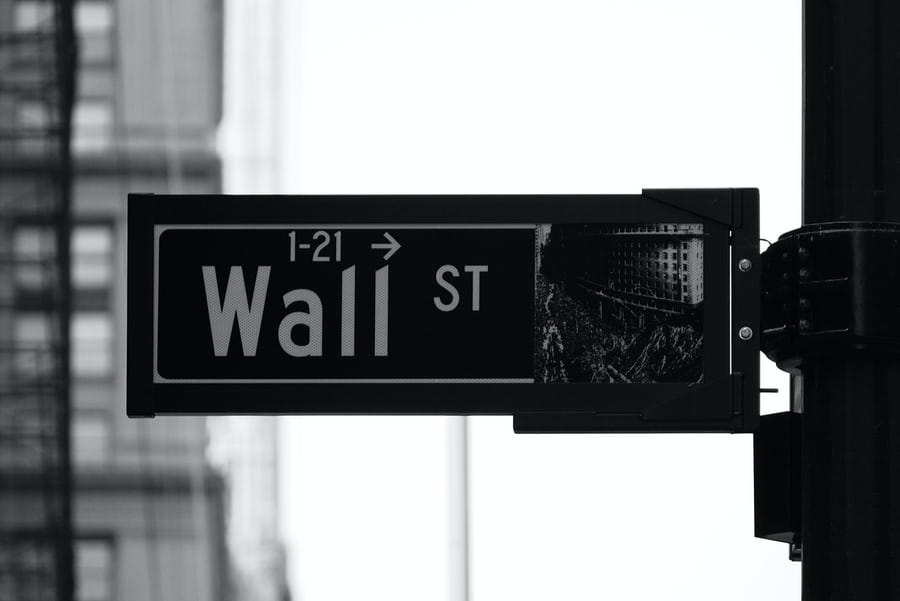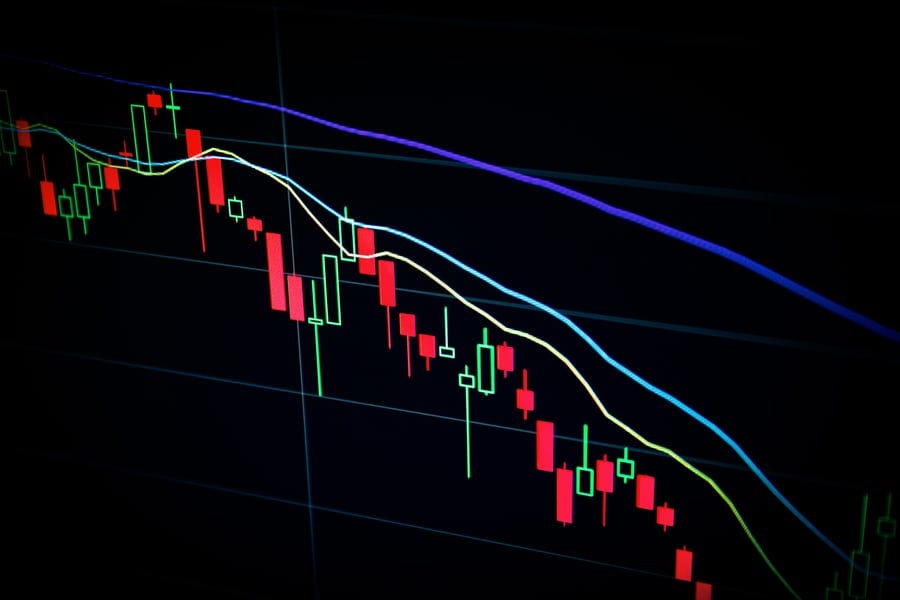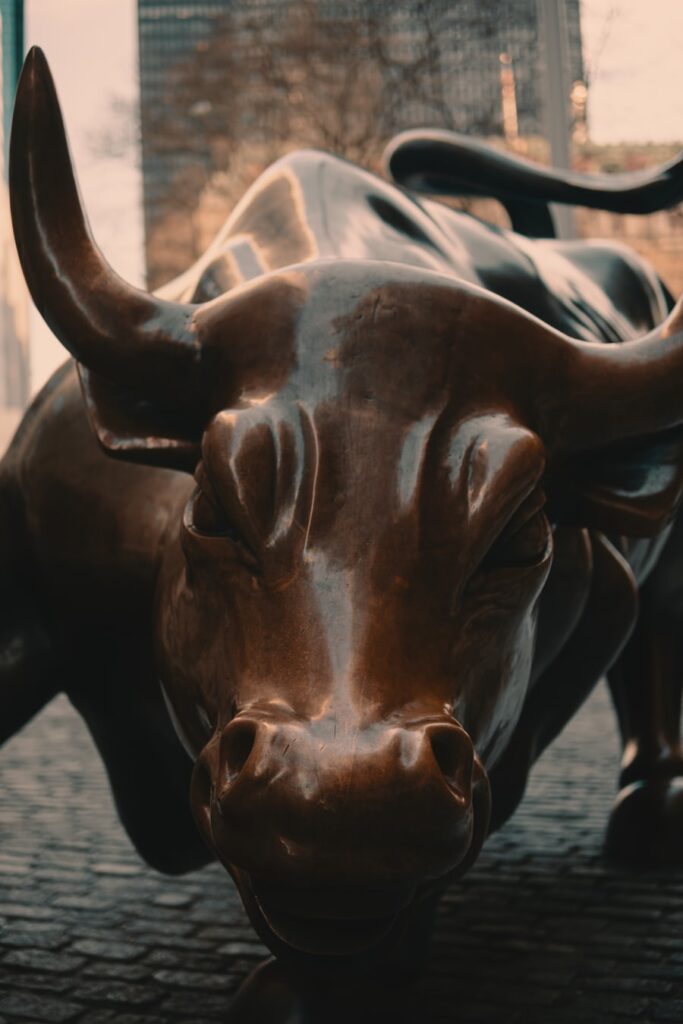If you don’t know what and how to invest anymore, you’re not alone.
Younger investors are growing increasingly wary of the market as various indicators from quantitive easing to the real estate market are cooling off. With majority of companies in correction territory facing 10–20% declines, are we in the midst of a bubble that is about to burst?
Although the old adage states, “it’s as risky to not invest as it is to invest” in this case, building up your savings, investing in riskless assets such as CDs and treasuries might not be such a bad idea.
Who knows how long this bull market will last. It’s gone 100mph per hour past the lows of 2020 and is now on a 13 year run unable to slow down. The sad reality about the markets is that it is unpredictable and when we expect a correction or pullback, it tends to not happen and when we are feeling extra ecstatic, it hits us out of nowhere.
The pullback from retail investors and novices especially Millennials and GenZers are making me question the reality and future of markets.
What if everyone stopped investing all together because they didn’t know what the future would really hold?
Developed markets such as the U.S. and China are stagnating due to slow growth and lack of real innovation besides feeding teenagers algorithms through a nuclear weapon, their devices. It seems as if we are lacking serious creativity and thought on how to improve the world besides robbing others at their expense to fuel the top 10%’s paychecks.
To answer the question, if everyone stopped investing, supply and demand would diminish, there would be no incentive to grow companies further as CEO compensation and those who make corporate decisions in company’s pay is comprised of equity via stock options, bonuses and warrants directly correlated to stock price.
You’ll never get rich having your earnings dependent on hours worked. Demand would diminish due to lower salaries, firstly from the bottom up and by the time executive pay diminishes, the company will be back on its feet. It’s fairly normal for a corrupt business to continue paying its executives at the same levels or even more comprised of an exit-package since market share and ‘excess rent’ is flushed into executive’s hands.
On the innovation side of things, venture capital and private equity firms would need to rely on hefty loans from the government to make any investment into a promising company. This would lead to larger government deficits as the financial industry now relies on them to spur growth. On the consumer side, we would have less diversified portfolios, emergency cash on the sidelines and fewer options.
Things would get so cheap with no inflation, it would be a deflationary environment leading to a recession, interest rates would fall and big corps would survive off based on struggling survivors at the bottom. It would survive and just work for the rich. The same as today just worse. America is poor with lots of money.
Thankfully, we aren’t at this point in this economy nor nearing it yet sometimes it feels like it especially during times of hardship as wealth inequality becomes more evident, the financial sector works harder in the interest of shareholders and essential to minimum wage workers aren’t fairly compensated for their duties.

Taper Tantrum
The Federal Reserve and central bank are the most powerful forces in the U.S. economy and their actions, pardon my use of words, trickles down to the rest of the country. They control monetary policy which means they set interest rates, the money supply in the economy through the federal funds and discount rate, QE and treasury purchases, stabilize the dollar and artificially control inflation.
Although inflation is better than none, it isn’t great at this point in time since it’s at its highest in 30 years. In their close minded world, the investors who don’t need to worry about it still are and are wary of how it’s impacting their vacation resort prices to lululemon bills.
The Fed manipulates interest rates by quantitive easing (QE), buying $120 billion worth of treasury and mortgage backed securities from the U.S. government each month to pump stimulus (low-interest rates) to spur borrowing for Americans in need. Interest rates aren’t decided by one person instead based on the value of long term treasuries dedicated by the forces of supply and demand. When there is excess demand and not enough supply, inflation kicks in eroding our purchasing power and as a result everything costs more. At this point inflation stands around 5%.
$3m is the new $1m these days.
If inflation keeps arising, this will diminish our purchasing power, lead us to ride the hedonic treadmill continuing to work to spend more on things that should cost less, dampen production within the supply chain and ultimately diminish our savings.
Now A Days
This recovery has certainly been sporadic and hasn’t felt like a proper one.
Here are the reasons why:
-Ongoing influx in home purchases while pricing buyers out due to outrageous demand + astronomical prices
-Frothy overvalued asset valuations
-Overseas trouble with monopolies (Alibaba, Tencent, Baidu, etc.) in China affecting broader markets
-National savings rate shot up to 30% a new record high for non-budget conscious consumers and slowly dropped once vaccines became available
-More interest in self-employment + no more W2 income
-Retail investing on the rise leading to more volatility in markets
-Pent-up demand being quarantined and trapped inside, consumers are desperate to go out and spend on discretionary luxury experiences and items they missed
-Delta variant threat
Once vaccinations went into effect in late 2020, people fled their homes and within a few months, the Fed signaled to the market earlier than expected that they would begin to taper as they can lessen their support towards the economy which will lead borrowing to become more expensive.
The Fed decides to taper when they see inflation is at sky-high rates, the economy is back on its feet in terms of spending, unemployment is down and non-farm payrolls and employment are near pre-pandemic levels.
This causes the markets to drop and go through its tamper tantrum phase.
Similar to today, in 2009 the Fed bought mortgage backed securities to help the housing market that went into panic as they were loaning out to faulty lenders. Interest rates sparked, emerging markets tumbled but the Fed didn’t slow down asset purchasing until a few years later to make sure the banks would be bailed out but compared to today, the Fed seems to act fast and escape quicker than expected leading the markets to go hay wire as they are unsure why the economy is doing so well despite uncertainty around every corner.

Slow September
The Fed is spooking the market at every moment. Any word they say affects the 10 year Treasury yield, an indictor on mortgages and investor sentiment. There is an expectation that interest rates will rise eventually and volatility will come about. Historically September is a slow month and returns the worst.
According to Investopedia… September is the worst month for the stock market, and since 1950…the Dow Jones has declined an average of 0.8% in September…and the SP500 drops an average of 0.5%.
Why?
-Behavior, uncertainty sentiment into Q4 after summer vacation investors have less optimism and more aversion stashing their money into treasury bonds, high yield junk bonds and safe haven assets.
-Mutual funds have a fiscal year that ends in September driving down asset prices selling their loosing positions for tax loss harvesting strategies
-Delta variant concern + back to school worries
-Eviction moratoriums ban expiration leading to positive sentiment more buyers can get into real estate market
-Housing market: no inventory, high construction and lumber prices, new homebuyers are priced out of the market, cheap mortgage, rents increasing-

What To Do With All Of This
This is a lot of information that we cannot control, let alone take in all at once. Yet as rational investors, it is smart to be aware of what’s going on in the economy and abroad in case there’s a juicy deal in the housing market when mortgages are still low or an opportunity to buy into our favorite blue chip stock arises before interest rates skyrocket and their valuations dip.
The Federal Reserve is backed into a corner telling us they weren’t planning on reducing their treasury purchases until 2024 when inflation is expected to hover around 2% but now as the economy is heating up faster than expected, they signal they might taper off as soon as the end of this year.
Pop the Bubble
I concur with ARK Invest’s CEO and founder, Cathie Wood, that there is no bubble on the horizon.
She is one of the few outliers who bought into Tesla, Bitcoin and Apple before they were cool.
Why do I believe no bubble is abound?
Because too many believe there is a bubble.
Humans are horrible at prediction, even analysts with fancy charts and Bloomberg terminals couldn’t tell banks were over leveraging themselves in 2008 to the point where two prominent investment banks, Bear Sterns and Lehman brothers collapsed.
Cathie Woods states that “in the late ’90s, our strategies would have been cheered on. You remember the leap frogging of analysts making estimates one higher than the other, price targets one higher than the other. We have nothing like that right now. In fact, you see a lot of IPOs coming out and falling to earth. We couldn’t be further away from a bubble.”
If too many people think it’s a bubble they’ll probably behave under the conditions that it won’t be a bubble.
Stay realistic, rational and make sure to sleep well at night with a cash cushion and long-term horizon under the pillow. Overtime the markets go up anyway so stick with what you know.
Don’t have too much fun. The market is trying to throw us off.
Life is so rich.
Mia

